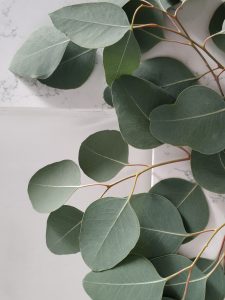· The leaf is made up of three tissue systems (Dermal, Ground and Vascular)
· The dermal tissue system consists of lower and upper epidermis
· The ground tissue system is found between the epidermal layers of leaf
· Epidermis
§ In dicot leaves, the epidermis is dorsiventral
§ Generally, the epidermis is made up of a single layer of cells that are closely packed and covered with a cuticle
§ The epidermal tissue is made up of;
§ Epidermal cells
§ Guard cells
§ Subsidiary cells
§ Epidermal trichomes
§ Epidermal cells
§ Epidermal cells are the most numerous, largest, and least specialized
§ Epidermal cells are more elongated in the leaves of monocots than in dicots
§ Guard cells
§ Consist of a pair of bean- shaped cells surrounding the stoma
§ They contain chloroplasts
§ Other epidermal cells do not contain chloroplasts
§ Subsidiary cells
§ They are 2 to 4 cells that surround the stoma
§ They do not contain chloroplasts
§ The epidermal layer consists of stomata
§ The stomata are part of a stoma complex which consists of a pore surrounded on each side by guard cells and subsidiary cells
§ The stoma complex regulates the exchange of gases and water vapour between the outside air and the interior of the leaf
§ There are more stomata over the abaxial that the adaxial epidermis t
§ Main function of the epidermis is to protect inner tissues
· Mesophyll
§ Mesophyll is the entire tissue between the upper and lower epidermis is Mesophyll is differentiated in two regions;
§ Palisade parenchyma and
§ Spongy parenchyma
§ This differentiation gives two anatomical designations of the leaf
· Dorsiventral leaf
Mesophyll is differentiated into palisade parenchyma (or palisade mesophyll) on the adaxial (upper) side and spongy parenchyma (or spongy mesophyll) on the abaxial (lower) side
o Common in dicot leaves
· Isobilateral leaf
o Leaf mesophyll is not differentiated this way (i.e., made of only spongy or palisade parenchyma)
o Common in monocots
§ Palisade Parenchyma (Palisade Mesophyll)
· Palisade parenchyma lies beneath the adaxial epidermis
o Palisade mesophyll may be present below both surfaces or occur only below the upper epidermis
· Consists of vertically elongated cylindrical cells in one or more layers
· Cells are compactly arranged with the chloroplasts close to the walls of the cell
· Main function is photosynthesis
§ Spongy Mesophyll
· Lies below the palisade mesophyll, with irregularly shaped, loosely arranged cells
· Contain fewer chloroplasts than palisade mesophyll
· Spongy cells facilitate exchange of gases with the help of air spaces
· The pores or stomata of the epidermis open into sub stomatal chambers, connecting to air spaces between the spongy layer cells
§ Vascular Tissues
· Veins are the vascular tissue of the leaf located in the spongy layer of the mesophyll
· Based on pattern of venation, the vascular system of leaves falls into two main classes:
§ The reticulate (or net) venation typical of dicotyledons
§ The parallel venation of the monocotyledons
· The veins are made up of xylem and phloem tissues
· The xylem typically lies over the phloem
· In dicotyledonous leaves the main veins are open and usually collateral (less commonly bicollateral), closed in monocot leaves

References
Evans, W. C. (2009). Trease and Evans Pharmacognosy. India: Reed Elsevier Limited.



Leave a Reply